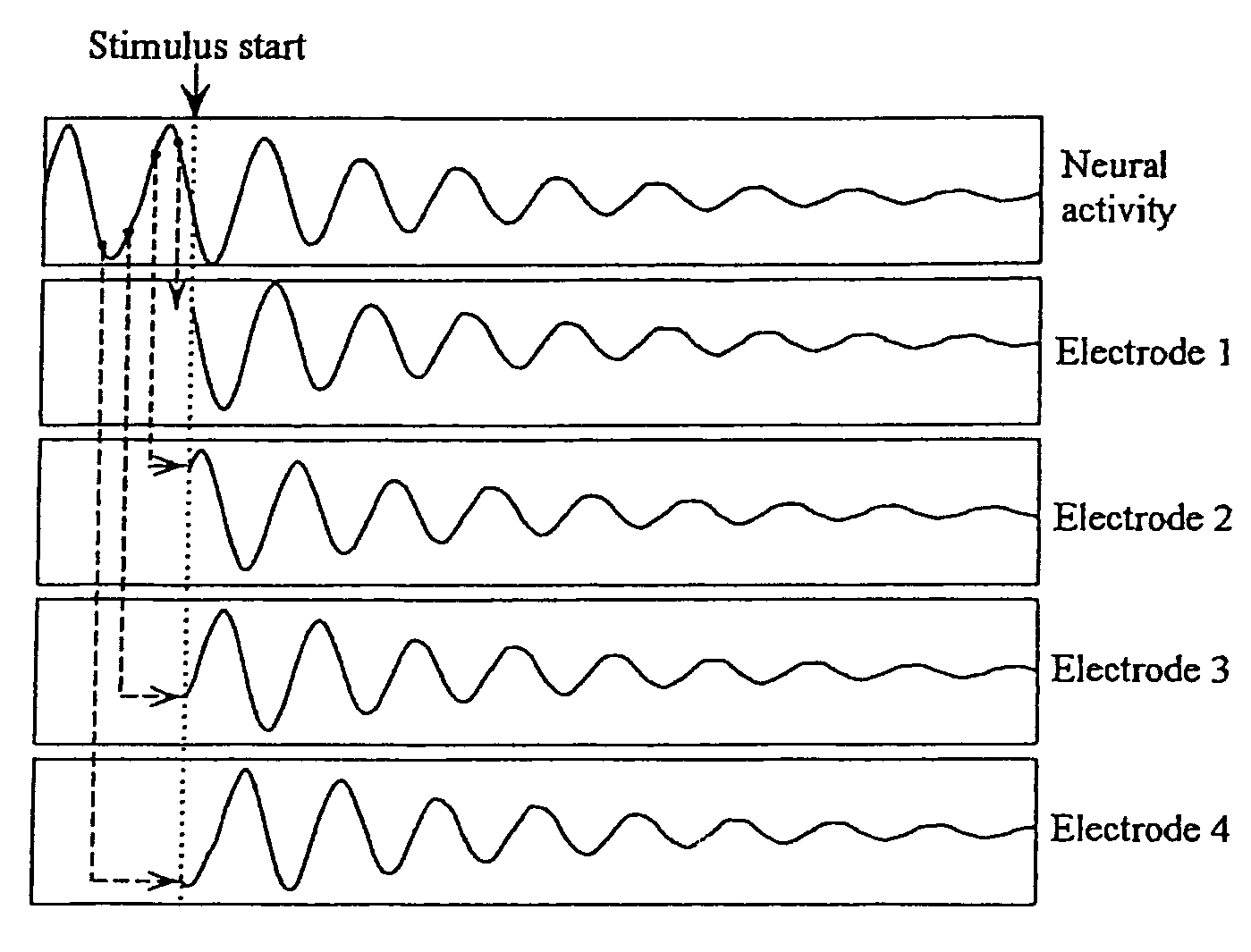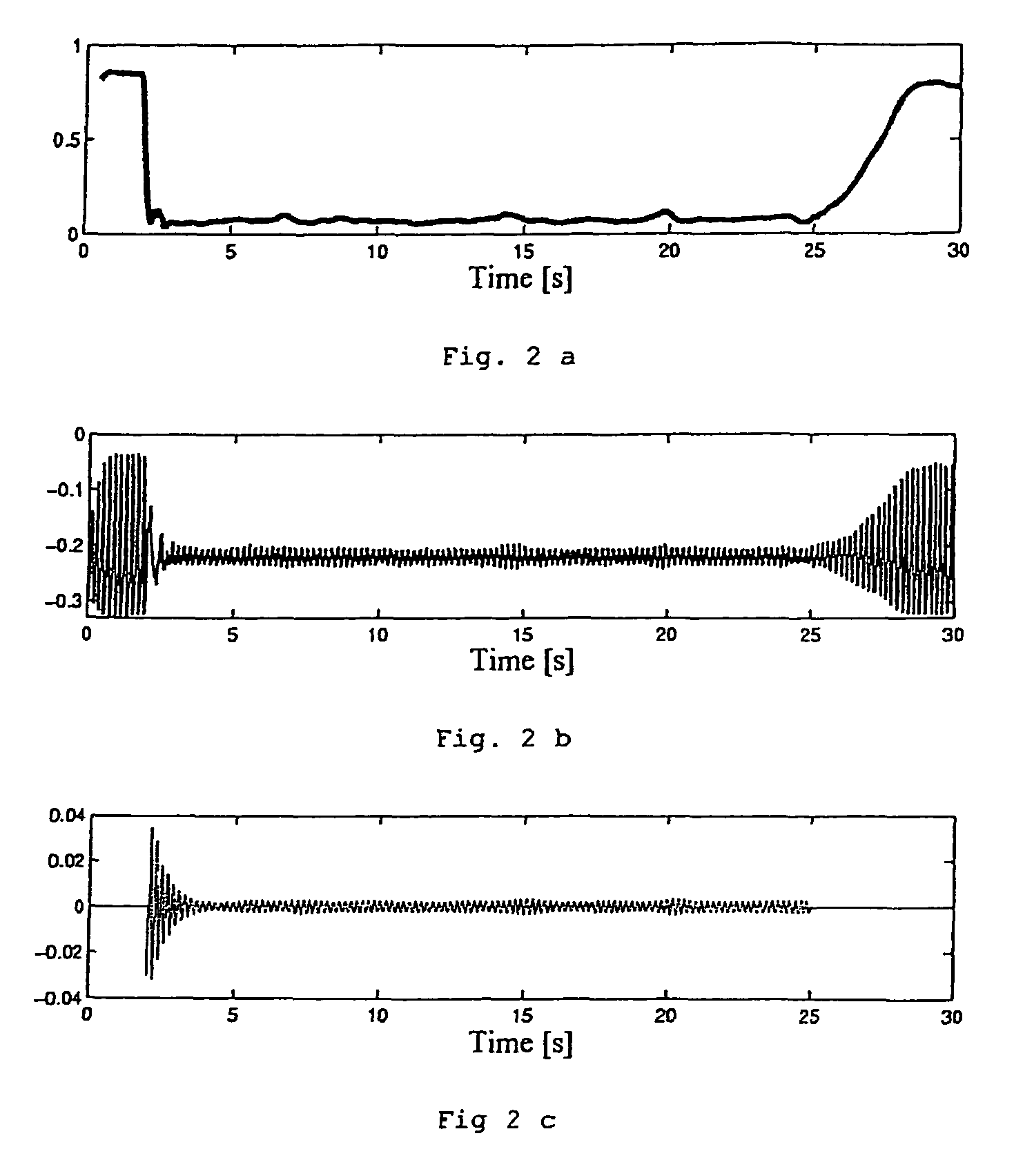Method and apparatus for desynchronization of neural brain activity
a neural brain activity and brain activity technology, applied in the field of neural brain activity desynchronization methods and apparatuses, can solve the problems of insufficient explanation of the effective mechanism on which the standard deep stimulation is based, high power consumption of the generator, and increased probability, so as to achieve less replacement. the effect of frequency
- Summary
- Abstract
- Description
- Claims
- Application Information
AI Technical Summary
Benefits of technology
Problems solved by technology
Method used
Image
Examples
example
[0149]If stimulation is carried out, for example, at four locations, then, by way of example, the following stimuli can be emitted via the four electrodes:[0150]1. The feedback stimulation signal, that is to say the processed neural activity, is applied via each of the electrodes, with the stimulation signals in each case being offset by T / 4 in time, as shown in FIG. 3, when T is the mean period of the rhythm of the neuron population to be desynchronized.[0151]2. As is illustrated in FIG. 4, stimulation signals with the same time delay but of different polarity are applied via the electrodes 1 and 2. The same stimulation signals with a different polarity are likewise applied via the electrodes 3 and 4.
[0152]By way of example, the stimulation is carried out with three different control mechanisms, as described in Section 6, for the stimulus application thus preferably allowing demand-controlled and thus power-saving and mild (avoiding side-effects) stimulation, as described in Sectio...
PUM
 Login to View More
Login to View More Abstract
Description
Claims
Application Information
 Login to View More
Login to View More - R&D
- Intellectual Property
- Life Sciences
- Materials
- Tech Scout
- Unparalleled Data Quality
- Higher Quality Content
- 60% Fewer Hallucinations
Browse by: Latest US Patents, China's latest patents, Technical Efficacy Thesaurus, Application Domain, Technology Topic, Popular Technical Reports.
© 2025 PatSnap. All rights reserved.Legal|Privacy policy|Modern Slavery Act Transparency Statement|Sitemap|About US| Contact US: help@patsnap.com



